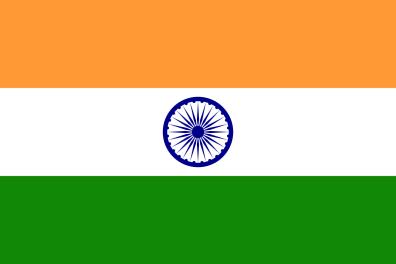Donate to Support Supercluster
Your support makes the Astronaut Database and Launch Tracker possible, and keeps all Supercluster content free.
SUPPORTSupercluster on Patreon
Your support makes the Astronaut Database and Launch Tracker possible, and keeps all Supercluster content free.
SUPPORTThis goes
to space
NVS-01
ISRO will be launching five next-generation satellites featuring new payloads and an extended lifespan of 12 years. Five new satellites viz. NVS-01, NVS-02, NVS-03, NVS-04 and NVS-05 will supplement and augment the current constellation of satellites.
The new satellites will feature the L5 and S-band and introduce a new interoperable civil signal in the L1 band in the navigation payload and will use Indian Rubidium Atomic Frequency Standard (iRAFS).
This introduction of the new L1 band will help facilitate NavIC proliferation in wearable smart and IoT devices featuring a low-power navigation system. NVS-01 is a replacement for IRNSS-1G satellite and will launch on GSLV in 2023.

On this
rocket
GSLV Mk II
Geosynchronous Satellite Launch Vehicle Mark II (GSLV Mk II) is the launch vehicle developed by India, to launch communication satellites in geo transfer orbit using cryogenic third stage. Initially Russian GK supplied cryogenic stages were used. Later cryogenic stage was indigenously developed and inducted in Jan 2014 from GSLV D5 onwards. This operational fourth generation launch vehicle is a three stage vehicle with four liquid strap-ons. The flight proven indigenously developed Cryogenic Upper Stage (CUS), forms the third stage of GSLV Mk II. From January 2014, the vehicle has achieved six consecutive successes.
Stats
Height: 51.73 m (With Ogive PLF)
Number of Stages: 3
Lift Off Mass: 420 tonnes
Payload to GTO: 2,250 kg (4,960 lbs)
Payload to LEO (Low Earth Orbit) : 6,000 kg (13,227.7 lbs)
Credit: ISRO

From this
launch site
Second Launch Pad - Satish Dhawan Space Centre, India
The Second Launch Pad (SLP) at the Satish Dhawan Space Centre (SDSC) in Sriharikota, India, is one of ISRO’s primary launch complexes. Operational since 2005, it was developed to support the growing number of satellite launches and to reduce dependence on the older First Launch Pad. The SLP is a versatile and modular facility, capable of launching all of ISRO's current rockets, including the Polar Satellite Launch Vehicle (PSLV), Geosynchronous Satellite Launch Vehicle (GSLV), and LVM3 (formerly GSLV Mk III).
Located on the eastern coast of India, the site allows for launches over the Bay of Bengal, ideal for a range of orbital inclinations. The SLP features a Mobile Service Tower (MST) and a Fixed Umbilical Tower (FUT) for vehicle integration, fueling, and payload access, enhancing launch preparation efficiency and safety. It has been used for major missions like Chandrayaan, Mars Orbiter Mission, and several NavIC satellites.
Image courtesy of ISRO.

Here's where to view NVS-01 (IRNSS-1J)
Viewing Sites
- Satish Dhawan Launch Viewing Gallery
GET THE SUPERCLUSTER APP
THE SUPERCLUSTER PODCAST
A podcast exploring the amazing milestones that changed space history, the wildest ideas that drive our future, and every development in this new Golden Age of Space.
Donate to support
Your support makes the Astronaut Database and Launch Tracker possible, and keeps all Supercluster content free.
SupportCOPYRIGHT 2021 SUPERCLUSTER LLC

